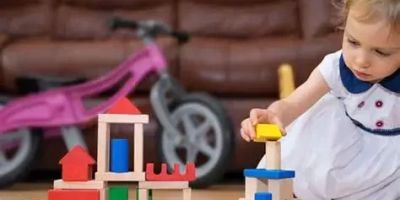Best Toy Animals for Educational Play
As a parent or educator, I know that finding the right toys to help children learn and grow can be a challenge. When it comes to educational play, toy animals are often overlooked, but they can be an incredibly valuable resource for kids of all ages. These toys not only help children learn about the natural world, but they also stimulate creativity, encourage imaginative play, and develop motor skills. Let me take you through some of the best toy animals for educational play and how they can enhance your child’s learning experience.
1. The Benefits of Toy Animals in Education
At first glance, toy animals might seem like just another source of entertainment, but they serve a much deeper purpose. By incorporating animal toys into your child's playtime, you're offering them more than just fun. These toys can help in various aspects of a child’s development, such as:
- Cognitive skills: Learning the names, habitats, and behaviors of animals can significantly enhance a child’s memory and ability to retain new information.
- Motor skills: When children manipulate toy animals—arranging them into scenes, stacking them, or making them move—they develop fine motor skills and hand-eye coordination.
- Creativity and imagination: Role-playing with animal figures allows children to create their own stories and scenarios, encouraging imaginative thinking and creativity.
- Social skills: Group play with animal toys helps children learn how to share, take turns, and engage in cooperative play.
2. Best Toy Animals for Different Ages
When choosing toy animals, it's important to pick age-appropriate options that will engage and challenge children at their developmental stage. Here are some great options based on different age groups:
For Toddlers (Ages 1-3)
At this stage, kids are just beginning to develop their fine motor skills, so it's important to provide them with larger animal figures that are easy to grasp. Soft, squeezable animals or chunky plastic animals are perfect for toddlers. Some excellent choices include:
- Fisher-Price Little People Animal Figures: These are sturdy, colorful, and easy for little hands to hold.
- PlanToys Wooden Animal Figures: Made from sustainably sourced wood, these animals are simple yet durable for younger kids.
For Preschoolers (Ages 3-5)
Preschoolers can handle more detailed figures and are ready for pretend play. Small plastic or rubber animal figurines are ideal for this age group, and they can be used to set up entire zoo or farm scenes. A few suggestions include:
- Schleich Animal Figures: These beautifully detailed, hand-painted animal figures help kids learn about real-life animals and their environments.
- Playmobil Farm Animals: These sets include both animals and accessories, allowing children to build their own farms or animal habitats.
For School-Aged Kids (Ages 6-8)
At this age, children enjoy building more complex scenes and often begin to role-play in depth. They might also be learning about animals in school, making this an ideal time to introduce toys that reflect real-world animal behavior and habitats. Consider these toys:
- LEGO Creator Wild Animal Sets: Perfect for kids who love to build, these sets allow children to create animals and habitats using LEGO blocks.
- National Geographic Animal Figures: These highly detailed animal figurines are not only great for imaginative play, but they can also help children learn about wildlife and ecosystems.
3. How to Integrate Toy Animals into Learning
Now that we’ve established the best toys for each age group, let's talk about how to effectively use these toys for educational purposes. Toy animals offer endless opportunities for learning, whether in the classroom, at home, or outdoors. Here are some ways to integrate them into daily activities:
Interactive Play
Encourage children to tell stories or create scenes with the animals. You can guide them by asking questions like, “Where do you think this elephant lives?” or “What do you think this lion eats?” This not only stimulates their imagination but also teaches them about animal habitats, diets, and behaviors.
Animal Sorting
Have children sort animals by size, color, habitat, or species. This can help develop their classification skills and also give them a chance to learn more about animal groups like mammals, birds, and reptiles.
Educational Games
Create simple games where kids can guess the animal based on clues. For example, describe an animal’s characteristics and ask them to identify it. This can help them practice their listening skills and improve their knowledge of animals.
4. Why Toy Animals Make Great Educational Gifts
When it comes to educational gifts, toy animals are an excellent option. Not only do they provide hours of fun, but they also encourage learning and exploration. Whether for a birthday, holiday, or just because, animal toys make a thoughtful and versatile gift for any child.
5. Final Thoughts
When choosing toys for educational play, toy animals are a wonderful, multi-purpose option. They provide numerous learning opportunities while also promoting creativity and imaginative play. No matter your child's age or developmental stage, there's a perfect animal toy to engage and educate them. So, the next time you're shopping for educational toys, consider adding some animal figures to your collection—you won’t regret it!





